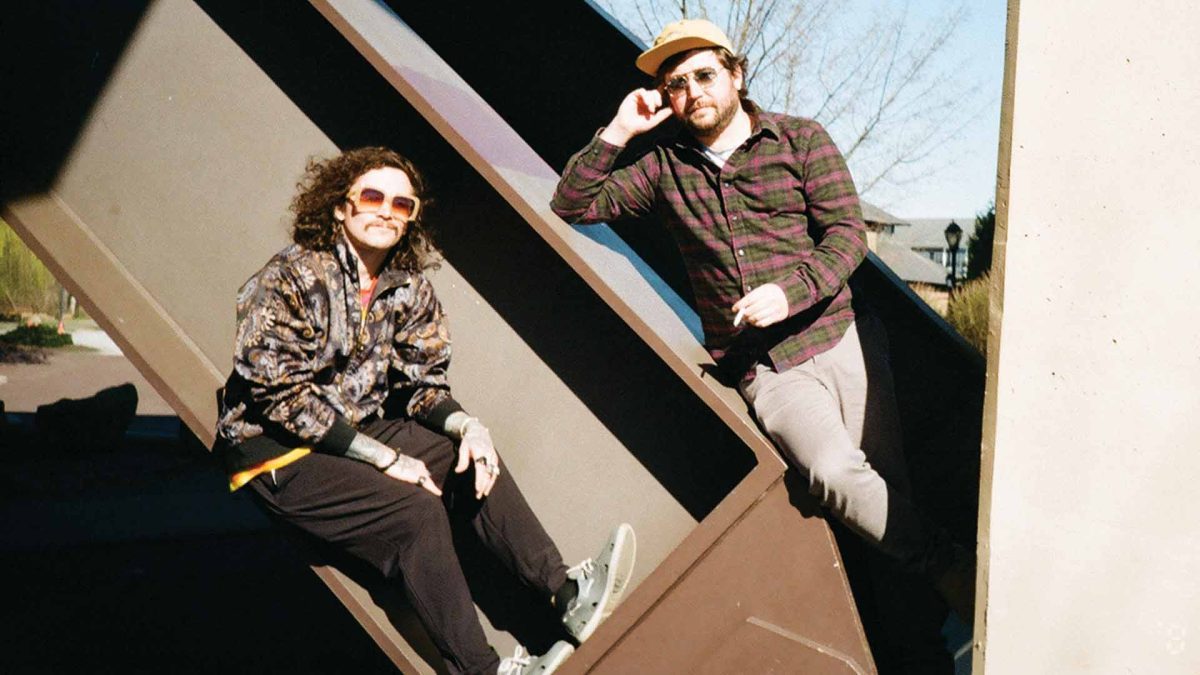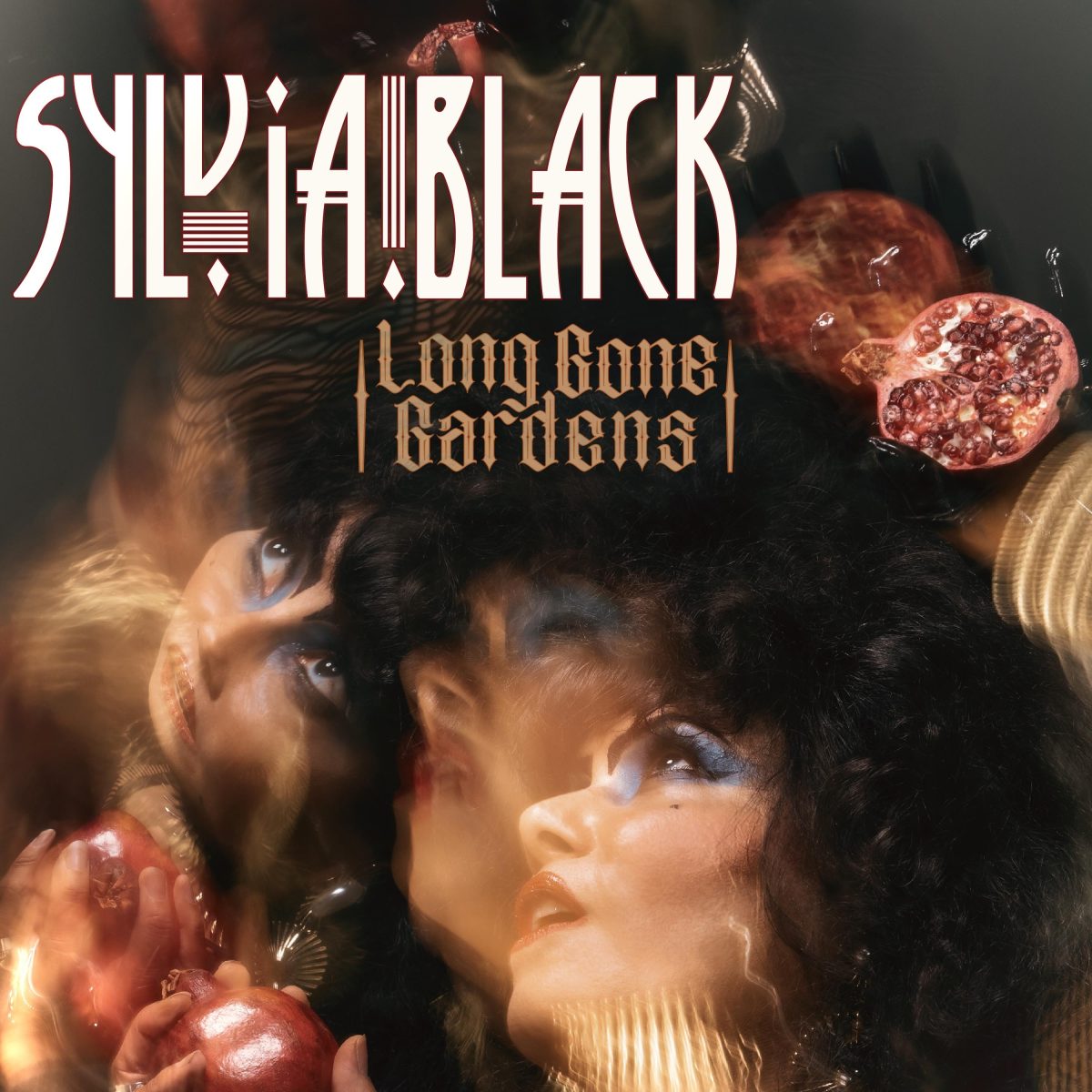By Danny Alonso
Fresh off a 2006 induction into the Rock and Roll Hall of Fame, Blondie is back together and getting ready for the release of their upcoming ninth studio album, Panic of Girls. During a recent catch-up with Origivation writer Danny Alonso, guitarist and co-founder Chris Stein discussed getting the hang of writing music again, Lady Gaga’s attractive freakishness, and “Blondie books.”
In a recent BBC documentary, Iggy Pop begged the question, “Is there a really decent American pop music group since Blondie?”
Without hesitation he curtly answered his own question, “I don’t think so.” When you think about it, the Godfather of Punk is right.
But what was so extraordinary about Blondie was their ability to transcend the realm of “pop”. The group voted “Least Likely To Succeed” (the discouraging moniker given to them during their early CBGB days) evolved into musical visionaries. They were the punk band fearless enough to embrace electronic sounds with their hit “Heart of Glass” at the height of the “disco sucks” era. On later albums, they incorporated reggae and island sounds. And six years before Aerosmith and Run DMC collaborated on their classic rap-rock version of “Walk This Way”, Blondie released the groundbreaking single “Rapture”. The song is considered to be revolutionary, becoming one of the first hit singles to involve rap music. If that wasn’t enough, it was also the first rap video ever played on MTV. And even though the name Blondie may conjure up visions of their striking front woman, Debbie Harry will be the first to tell you that none of it could have been possible without her bandmate, ex-lover and best friend, Chris Stein.
Growing up in Brooklyn, Chris’ earliest memories of music are of his mother Estelle singing songs from films like Fellini’s “La Strada.” As a teenager, he gravitated towards folk music and artists like Bob Dylan before discovering The Beatles and The Stones. “My head paralleled the rise of all these groups when they first came about. I feel really lucky that I was born in 1950 and see all that stuff,” he says. “When I was a kid most of my heroes were sixty year old black men. All those great blues guys like Muddy Waters and John Lee Hooker. But when Debbie and I started working together in the mid-70s, I sort of lost my fan status. I started paying less attention to what was going on around me musically. I think I am paying more attention to modern music now than I did in the ’70s and ’80s.”

New York City was in a state of decay in the early 1970’s. Bankrupt and crime-ridden, the Big Apple was more akin to the Wild West. Apartments were burned out and completely abandoned. Building facades were reminiscent of the destroyed ruins at the end of WWII. While the grime of the city made it undesirable for many, it was this same sleazy splendor that offered many young people the opportunity live cheaply in Manhattan. It was the perfect climate to thrive as an artist. It was during this time that Chris enrolled at the School of Visual Arts to pursue his love of photography. It was one day at school he noticed a flyer advertising an up-and-coming rock and roll band. Initially he thought it was an ad for a drag act as the photo depicted a group of skinny young guys in heavy makeup and wearing women’s clothes. That band he soon learned was the New York Dolls. He remembers of the time, “I just saw it going on and it just seemed like a cool thing. I was always going to the Fillmore East. I saw a lot of amazing bands when I was a kid, pivotal concerts and all that stuff. I was at Woodstock and the whole deal.” Chris found himself drawn to the downtown glam rock scene but it was the Dolls’ opening band, The Magic Tramps, that he had more of an affinity for. Chris began working as their roadie and eventually graduated to guitarist. He fit the bill perfectly with his long hair, penchant for dark eye makeup and towering platform boots. But the era was short lived and by the mid ’70s, the glitter was starting to fade making way for the approaching new wave.
uring the summer of 1974, Chris was invited to see a friend’s band play at a little dive bar on West 28th street, the now defunct Boburn Tavern. The band was a campy, all-girl trio known as the Stillettoes. That night would change his life forever. As legend has it, his eyes met with one of the girls during the show and it was love at first sight. That girl was a shy (then brunette) Debbie Harry. In their 1982 memoir “Making Tracks,” she recounts that evening. “I couldn’t see his face, only the outline of his head, but I could feel him looking at me and I was very nervous so I delivered a lot of songs to him. We had a psychic connection right away, which struck me particularly because I’d previously only had such strong psychic connections with girlfriends.” The pair soon began working together when Elda Gentile, one of the Stillettoes, asked Chris to join the group.

The Stillettoes began performing at a biker bar on the Bowery called CBGB. Owner Hilly Kristal had opened the bar in New York’s East Village, originally intending it to be a venue for live country music. In fact, the club’s name was an acronym for country, bluegrass and blues. Unbeknownst to Hilly and his patrons, the unassuming bar was to become the birthplace of the burgeoning U.S. punk scene. Bands like Television, the Ramones and Talking Heads would all call the club home. Hilly gave them the freedom to carve their own musical identities. Stein recalls the club’s unconventional character, “CB’s was just like going into somebody’s crummy basement. There were big stuffed easy chairs and Hilly had these dogs that would crap all around. It was all very funky.” However, Stein is dubious if a scene like that could flourish in today’s world. “You have to have a fortune to live in the city! How can you have a band when you have to worry about coming up with $2,000 every month for rent? I am unsure if something like that will ever happen again.”
But close to four decades ago, the milieu was alive and gaining momentum as the bands honed their talents. Rock photographer Bob Gruen put it best, “people tend to look back and say great bands were playing there. No, the bands that were playing there got great later on. Having had the place to be bad, they got good.”

Chris and Debbie got their chance to “be bad” when they parted ways with the Stillettoes and decided to start their own band. They would go through several incarnations (Angel and the Snake and Blondie & The Banzai Babies to name a few) and line-up changes before becoming Blondie. Joining Debbie and Chris was drummer Clem Burke and keyboardist Jimmy Destri. But even in a world of musical amateurs, Blondie was looked upon as a joke. Rock lore has it that Patti Smith refused to have Blondie on the same bill at CBGBs. Their music was considered fluff compared to the likes of Smiths’ serious brand of poetry-inspired rock or Suicide’s eerie, avant-garde sound. And at a time when women in rock dressed and acted like one of the boys, Debbie skillfully created her Blondie stage persona to be both strong and defiant as well as glamorous and sexy.
It was that glamour and her obvious visual appeal that would prove helpful during those early days. Chris’ photographs of Debbie garnered the group its very first media attention, being published in music magazines like Punk, New York Rocker and Creem. In true punk D.I.Y. fashion, Chris would set up a small cyc in their Bowery loft to photograph his girlfriend. And long before professional stylists, their neighbor Stephen Sprouse would aid the couple by outfitting them in his mod-inspired designs. Interestingly enough, Stein admits, “in a lot of cases people saw pictures of Debbie before they heard the music.” To this day Chris continues to be photographically inclined. “I just always liked doing photography and do a lot of digital stuff now. I may go back to film; I’m not sure. Maybe this year I’ll get a couple more books out. I have probably about three books of stuff. I need to get a little more aggressive about it. Everyone I know who is a photographer has done a Blondie book.”
Blondie’s hard work and persistence paid off. In 1976 they were signed to Private Stock Records and released their self-titled debut album. Soon after, they were chosen by Mr. Pop himself to be the opening act on his tour for The Idiot record. (David Bowie played piano in Iggy’s band and joined the group on the road.) Yet while success eluded them in their own country, the girl-group inspired B-side “In The Flesh” went to number one in Australia. Richard Gottehrer, who came to fame as a songwriter in the ’60s with classic songs like “My Boyfriend’s Back” and “I Want Candy”, worked with the band to produce their first two records. He was the perfect person to help form the group’s early sound which was then a marriage of the Shangri-Las and raw garage rock.

By 1978, Blondie’s new record company Chrysalis brought in Australian producer Mike Chapman to work with the band on their third album, Parallel Lines. Previously, Chapman produced early ’70s hits for The Sweet, Mud and Suzi Quatro. He would become incredibly influential to the Blondie story by transforming the little punk band from the Lower East Side into something commercial and worldwide. Chapman would go on to be their producer up until the group’s demise in 1982. Parallel Lines spawned several hits across the pond but it was a song that the band had been toying with since their early CBGB days that helped crack the American market. “Once I Had A Love” was a mellow reggae number Chris and Debbie wrote in ’75. Influenced by Kraftwerk and Donna Summer, Chapman and the band meticulously reworked the song into a pulsing disco number. Renamed “Heart Of Glass”, after the Werner Herzog film, the song propelled the band to the top of the charts making them the number one band in the world. That album would go on to sell over six million copies and is now considered a classic.
Even with their new superstar status, Chris and Debbie managed to stay true to their bohemian roots. This is most evident in the cable-access show TV Party, which Stein co-hosted with writer and friend Glenn O’Brien. There was an anarchistic element to their show — from the on-air drug use to what has been described as Chris’ favorite part, the belligerent phone calls from viewers. The show had an intimate quality and it became the intersection where modern music, art and fashion all collided. One week Mick Jones of The Clash would appear as their guest; the next week David Byrne might be performing. Debbie would sometimes be in the control room and oftentimes painter Jean-Michel Basquiat manned the camera. In a small TV studio in midtown Manhattan, the famous mingled with the soon-to-be famous. The side project also served as a type of respite for Chris and Debbie who were dealing with the increasing pressures of celebrity. Stein recalls, “TV Party situation was just really great. It was kind of like going to our own club once a week. There was maybe a hundred or so people and we’d gather in this studio. I don’t know who we were actually reaching but it was a lot of fun and enjoyable. The show was a great experiment.”
It was at the show that Chris and Debbie met another pivotal figure, graffiti artist Fab 5 Freddy. Freddy was the first person to expose the pair to a new rebellious sound — hip-hop. “He took us up to this thing in the Bronx in ’77.” recalls Chris. “We were the only white people there. It was great seeing this alien scene, which was very similar to what was going downtown with us. All these kids just going nuts and having a great time, it was fantastic.” Three years after that event, and partly inspired by Chic’s “Good Times”, Stein and Harry wrote “Rapture”. Chris still finds himself listening to modern R&B. “I listen to KISS FM and what’s on the radio. There is innocence to it; it’s not as jaded as modern rock. A lot of those guys are coming up with very fresh sounds and melodies that are based purely on experimentation.”

But even with all their commercial and critical success, their demons soon caught up with them. By 1983, the record label dropped the band, they were in serious debt and most of the members were battling serious drug addiction. Chris was hit the hardest as during this time he developed a near fatal autoimmune disease called pemphigus vulgaris. This was at the beginning of the AIDS epidemic and it took doctors some time to diagnosis Stein with the rare illness. While Debbie continued to work, sporadically releasing songs like “Rush Rush” from the film Scarface, she withdrew from the limelight to help nurse Chris back to health. By the time Stein recovered in the mid ’80s, both he and Debbie noticed how much things had changed. MTV was omnipotent and it was the age of Madonna; Blondie had been eclipsed. While the two are no longer romantically involved, Debbie and Chris remain the closest of friends. During her solo years, he continued to write, record and tour with Harry. And while it is fair to say that her records did not match the success of Blondie, the duo still managed to have fun. “I always had a good time working and the scene was still really great in New York. It didn’t really start going downhill until the ’90s.”
In the late nineties Chris had the mad idea to reform Blondie. While it took some coaxing, the original four members eventually agreed to reunite, releasing 1999’s No Exit. The album picked up right where they left off and it gave them a number one single in the U.K. with the anthemic “Maria”. In 2003 they followed the record up with The Curse Of Blondie. But even with all of their accolades the band is not resting on their laurels. They continue to defy categorization with their forthcoming ninth studio album Panic of Girls. “The record is formed by what the music is and what the songs become. This was kind of eclectic again.” Chris elaborated on his blog Rednight.net ”
I think that this record will help people understand that one can write rock lyrics that go further into the realm of poetry and literature, that just don’t make simple statements. Debbie is just writing really great stuff. She is at a high point with that. I am always awed by what she comes up with.”

Producer Jeff Saltzman was at the helm for the making of Panic. Saltzman produced albums for acts like The Killers, The Sounds and Fischerspooner, all musical descendants of the Blondie look, style and sound. Chris also admits to being more driven and enthusiastic this time around. He had a very hands-on approach, experimenting with different sounds by using software like Apple Logic and Garage Band. He also reconnected with writing on the guitar. “This new record is way overdue. It took me awhile to get back in the writing mode. I hope from now on to get something out more regularly. These new tracks reflect what I have been listening to lately.” One of Chris’ favorite groups of the moment is Beirut. It’s fitting, as they too are not afraid to embrace all types of styles, blending indie rock, folk music and world music. After getting in touch with zf, plays on a few of the tracks.
Chris has mixed feelings regarding the music industry today. “It doesn’t have the same kind of cachet. It’s not an outsider thing anymore; it’s so mainstream.” However, there are still a handful of performers out there carrying the antiestablishment torch. “That’s why Lady Gaga is so popular now. Part of her success comes from her freakiness because people are attracted to that. But we are in a weird place today. On one hand, you have to struggle to get in with a record company who is going to give you $100,000 – $200,000 to make a record. At the same time, two kids with a computer can make a record in their basement for $3,000. I don’t know if that’s better or not. There is something to be said about working hard versus just throwing something down made out of loops. You have to weed through the shit but I do hear a lot of great stuff like Fever Ray, which sounds like its all done on the computer. It’s fantastic.”

Something can also be said of a band that continues to challenge themselves and grow at this stage of their career. In 2006, Blondie joined their musical heroes in the pantheon known as the Rock and Roll Hall of Fame. Garbage’s Shirley Mason inducted the band that evening and effortlessly summed up what made them one of the coolest bands in the history of rock and roll. “Blondie put it this way once, ‘dreaming is free’. For many of us, Blondie were the dream.”







